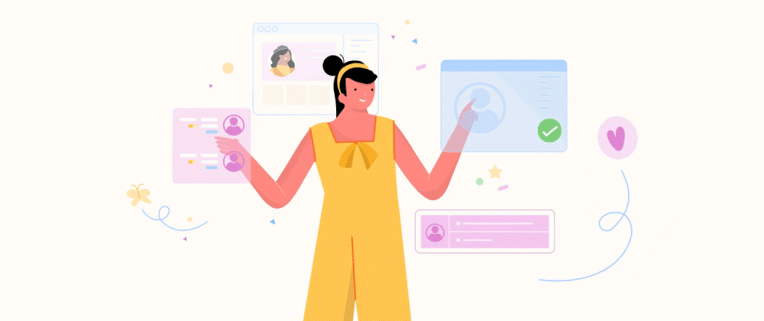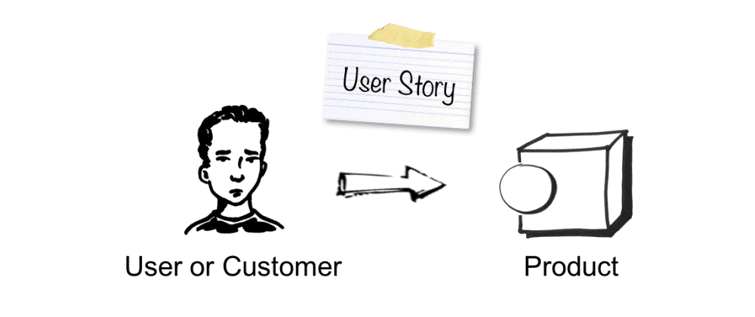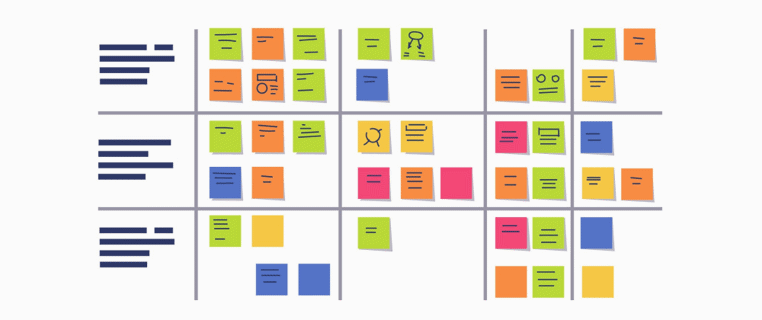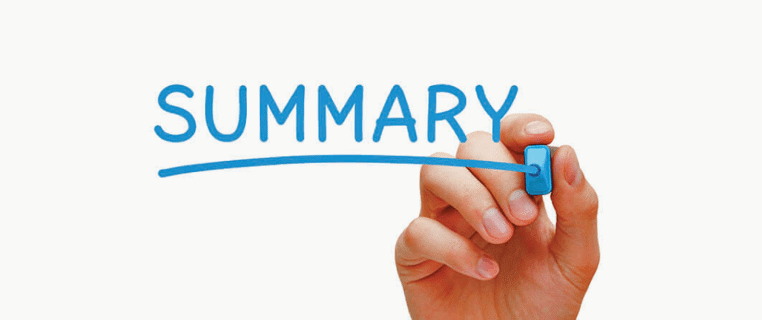
Mobile app development includes a lot of processes, from app idea planning to app testing & it’s not an easy task. User stories work as a building block of mobile app development. A user story is a brief description of a feature that the customer needs to use the app. A user story can be used as a way to organize requirements and design at the beginning of a project. User stories basically focus on your end-user, helps to make clear objectives for the development team & break down the tasks for execution.
User stories are an agile development technique that breaks down large tasks into smaller, more manageable chunks. Through agile development, you can deliver more efficient & end-to-end service to your consumers, which makes you a user-centric app development company. User stories help the company to define users and determine app features, feature goals,s and functionalities. So, it becomes more convenient to your target audience, which eventually boost KPIs and other metrics.
When a client’s project requirement is complex, it becomes difficult for the team to turn their vision into reality. Hence, user stories truly simplify the project by translating the project requirements into tangible functionalities.
Most of the time, user stories are written in a very vague manner. They are not specific enough to be used as requirements for development teams. This leads to a lot of misunderstandings and confusion among the team members. User stories should be written so that everyone on the team can easily understand them. User stories are often created collaboratively with key stakeholders, such as business analysts, designers, and developers.
This article will be an in-depth guide to creating an excellent user story for a better mobile app.
Why User Stories Are Vital?
In short, user stories become a bridge between the technical team & business, helping to understand the product & conveniently engage app users. User stories are vital because they are the foundation of understanding the user's wants and why. They help us see that the user is not just a random person but a person with specific needs and desires. Also, they give us insight into the user's perspective and motivations. User stories also help us understand our users' emotions to create a more compelling experience for them.
A typical user story includes three key sections:
Mobile app development includes a lot of processes, from app idea planning to app testing & it’s not an easy task. User stories work as a building block of mobile app development. A user story is a brief description of a feature that the customer needs to use the app. A user story can be used as a way to organize requirements and design at the beginning of a project. User stories basically focus on your end-user, helps to make clear objectives for the development team & break down the tasks for execution.
User stories are an agile development technique that breaks down large tasks into smaller, more manageable chunks. Through agile development, you can deliver more efficient & end-to-end service to your consumers, which makes you a user-centric app development company. User stories help the company to define users and determine app features, feature goals,s and functionalities. So, it becomes more convenient to your target audience, which eventually boost KPIs and other metrics.
When a client’s project requirement is complex, it becomes difficult for the team to turn their vision into reality. Hence, user stories truly simplify the project by translating the project requirements into tangible functionalities.
Most of the time, user stories are written in a very vague manner. They are not specific enough to be used as requirements for development teams. This leads to a lot of misunderstandings and confusion among the team members. User stories should be written so that everyone on the team can easily understand them. User stories are often created collaboratively with key stakeholders, such as business analysts, designers, and developers.
This article will be an in-depth guide to creating an excellent user story for a better mobile app.
Why User Stories Are Vital?

In short, user stories become a bridge between the technical team & business, helping to understand the product & conveniently engage app users. User stories are vital because they are the foundation of understanding the user's wants and why. They help us see that the user is not just a random person but a person with specific needs and desires. Also, they give us insight into the user's perspective and motivations. User stories also help us understand our users' emotions to create a more compelling experience for them.
A typical user story includes three key sections:
• What: The problem or need that this feature will address.
• As: A statement about what the person doing the task wants to achieve with this user story.
• So That: The benefit or result of completing this feature for both users and developers.
Some key benefits of user stories involve the following:
• Team collaboration becomes easy with user stories. As it is clear & easy to divide into small tasks, team members can choose the best route to ensure a better end result.
• It helps to streamline app feature goals by organizing the app development stage & highlighting the end user’s ness.
• User stories accelerate team motivation & bring momentum whenever a new story gets achieved.
• Not only the team members but also the clients & stakeholders become happy as an excellent user story ensures a great user experience for the app.
Determine The Attributes Of A Great User Story

A great user story is one that has a clear goal, a simple and concise description of what the app should do, and an estimate of how long it will take to complete. INVEST is an acronym that describes the key attributes of a great user story & it is considered to be the gold standard for defining the success of a user story. Let’s have a look at each part of it-
Independent
In the app development process, each story should be treated as a single component & must not have any dependency on other stories. So developers can overlap between stories. But user stories also can be developed in a sequence according to the business requirements & privatizations.
Negotiable
User stories are basically a collaboration work among programmers, designers, clients & stakeholders, which actually starts from a legit conversation. So, there should be no fixed or specific flow to develop & implement stories. User stories should be written prioritizing project requirements given by the clients. As stories are not fixed descriptions of functionalities, they should contain only short information in their description about the basic specifications.
Valuable
As user stories are written documents of app features, ensure every step adds value to the end-user. This is the ultimate goal of an ideal user story. If the stories don’t add value to the end user, you should simply eliminate or omit them.
Estimable
A user story should be sized appropriately to add value to the end-user with proper timeline development. A feature with a high value and a long development time should not be the highest priority due to development time.
Small
When you are working on a big development project, the user stories should be designed in a small blocks. Also, the size of the user stories depends on the required project methodology. If the project is based on agile methodologies, stories shouldn’t take more than three or four days of work.
Testable
Each story should have valid, acceptable criteria to test the specific feature. if a story has passed its tests, it proves that it has been successfully developed.
Steps To Create An Excellent User Story

Identify Your App User
The first step to creating a great user story is identifying your app user. This is the most important step because it will determine what you need to build in the app and what features need to be included. Determining your user persona is important to create a great user story. A user persona decides what the user does when they’re connected to the app. It’s also possible that a single user might have multiple associations when using the product.
Determine The Value Of The Feature
Defining ‘who’ &’ what’ solves the problem of every user story. Your developed user story must need to add value to a certain user base. Knowing the actual; value of the app functionalities helps the development team be more user-centric— as they always keep the end user’s benefit in mins.The user story should be written in such a way that it answers the following questions:
➤ Who will benefit from this change?
➤ What will happen as a result of this change?
➤ Why is this change important?
➤ How would you know that you are done with this change?
Keep The Format Simple & Concise
While you are documenting user stories, follow the KISS( Keep it short & simple) format. User stories should be written in such a way that everyone on the team can easily understand them. An ideal user story includes three key sections:
➤ Type of user persona
➤ App feature or an action
➤ Benefit or value of the added feature
The best way to do this is by following these simple steps:
➤ Use short sentences that clearly explain what is being asked of the user
➤ Use active voice and present tense
➤ Be as specific as possible
➤ Keep it simple
Decide The Acceptance Criteria
The acceptance criteria is a set of conditions that must be met in order to accept the work done on the user story. It is important to have acceptance criteria before starting work on a user story because it helps developers know what they need to do for it to be accepted. The acceptance criteria define how your app will deliver value to the user. This is the step where the developer’s app development knowledge becomes helpful.
Summary

Before finishing up this article about creating great user stories for mobile apps, I like to include some pro tips that may be useful at any stage of the mobile app development process-
✰ Always be organized with the client's requirements & make a user story map to see the big picture.
✰ User stories need to be created keeping in mind the user perspective.
✰ Break your larger user stories into smaller chunks to make them easy to understand for both developers & users.
✰ Always encourage constructive criticism & collaborative brainstorming from the developer team.
✰ You can always refine the stories until they are ready.
If you plan to take any app development service, connect with us with your specific requirements.
Royex Technologies has been in the business since 2013 and has competent team members who have been developing projects for more than 300 clients worldwide. We specialize in responsive web development, mobile app development, CRM integration, AI solution for website & mobile applications, and many more. Check our website and portfolio to see our previous works. Contact us via email at info@royex.net or call us on +971566027916 with your requirements; only then we can tell you the development cost precisely. What: The problem or need that this feature will address.





